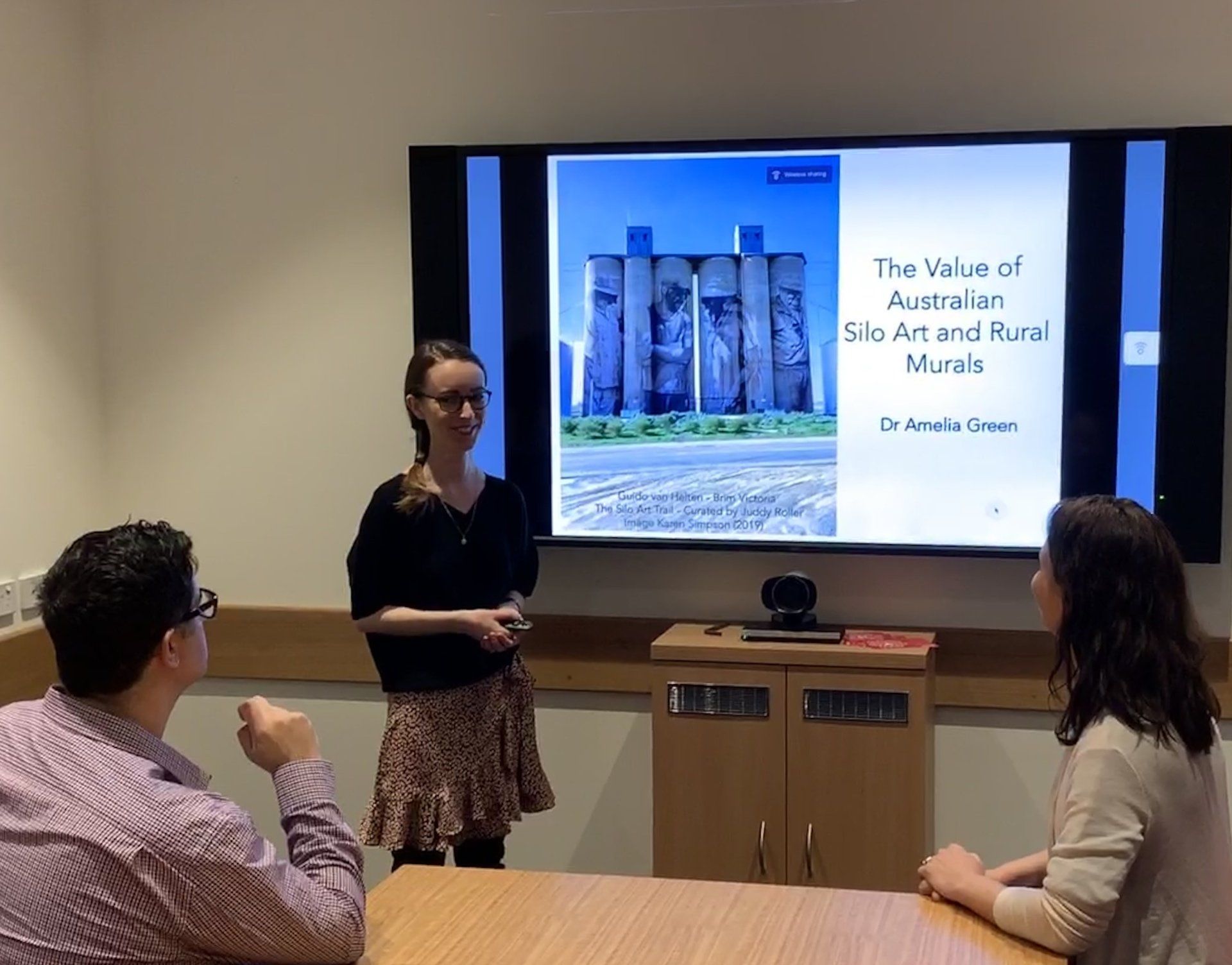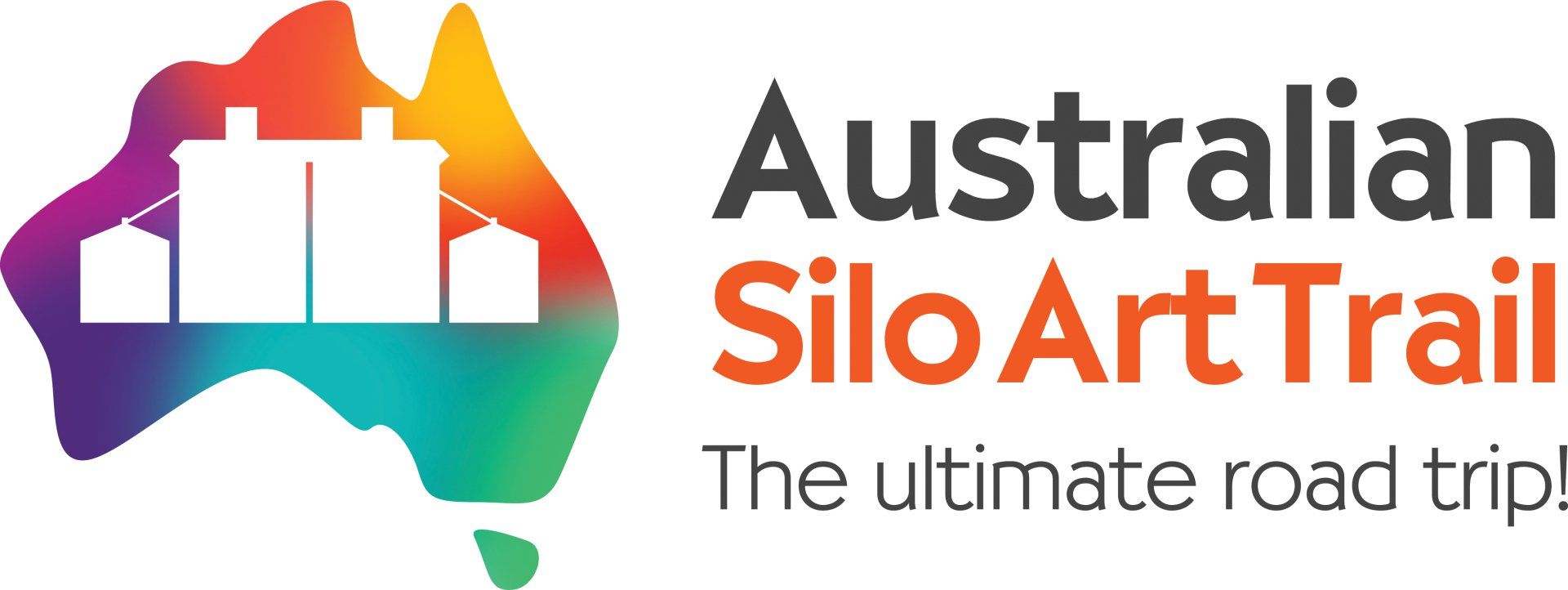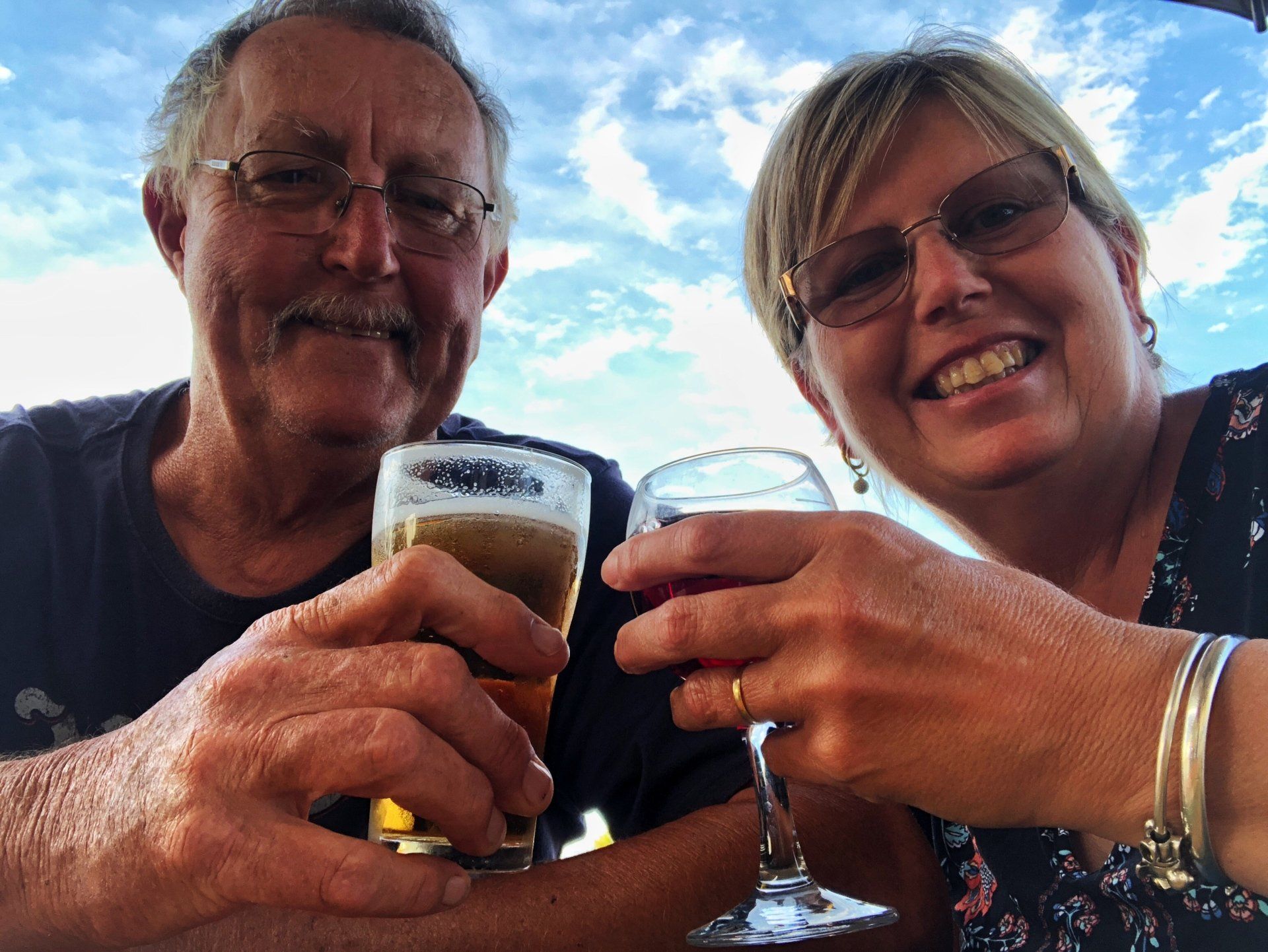Interview with Dr Amelia Green
Annette Green • August 6, 2019
Interview with Dr Amelia Green from Griffith University

We interviewed Dr Amelia Green from Griffith University, Branding and Consumer Research Network to get a professional insight into the value of the Australian Silo Art Trail.
Q. Can you summarise your studies of the silo art trail?
The initial stages of my research explored the capacity of Australian silo art to help empower communities, activate places and support tourism.
Analysis informing these stages considers policy and funding documents, project evaluations, media coverage and various communications (websites, social media and books etc.) published by the community groups, Councils, facilitators, curators and artists involved.
My analysis also considers exponential growth of the Australian Silo Art Trail Facebook Page and Group as key factors in the evolution of geographically dispersed silos into a nation-wide ‘trail’ and a celebrated Australian art form in its own right.
The findings so far reinforce that the value of the silo art trail is multi-faceted (e.g. social, cultural and economic). My current research investigates these multiple value dimensions from the perspective of multiple towns and groups (e.g. community members, businesses, tourists, artists, Councils, the general public), and how to best support and sustain the benefits of silo art for each location within the trail, and regional Australia, well into the future.
Analysis informing these stages considers policy and funding documents, project evaluations, media coverage and various communications (websites, social media and books etc.) published by the community groups, Councils, facilitators, curators and artists involved.
My analysis also considers exponential growth of the Australian Silo Art Trail Facebook Page and Group as key factors in the evolution of geographically dispersed silos into a nation-wide ‘trail’ and a celebrated Australian art form in its own right.
The findings so far reinforce that the value of the silo art trail is multi-faceted (e.g. social, cultural and economic). My current research investigates these multiple value dimensions from the perspective of multiple towns and groups (e.g. community members, businesses, tourists, artists, Councils, the general public), and how to best support and sustain the benefits of silo art for each location within the trail, and regional Australia, well into the future.
Q. What are some of the benefits of the silo art trail and the impact it can have on the communities and regional tourism?
My research illustrates the potential for silo art projects, and development of silo art trail, to:
- Engage local communities and enable co-authorship of place identities, through both (1) design/concept development in cases where the community works together and with artists, curators etc., and (2) conversations amongst residents and tourists about the murals and towns that continue well after the paint dries.
- Celebrate uniqueness of individual towns and distinctive rural and regional Australian identities in ways that resonate with present-day communities and other contemporary audiences (e.g. tourists looking to engage with local cultures).
- Provide a ‘face’ that enlivens landscapes by introducing often emotive and striking creative stimuli (even when no person is depicted).
- Re-activate and meaningfully re-interpret grain silos, a physically distinctive and socio-historically significant symbol of collective community achievement and Australian farming culture.
- Establish towns ‘on the map’ and signify that a community ‘lives here’.
- Start new conversations, not just for size and visual impact of each mural, but also the messages contained within (e.g. consider how the Water Diviner silos by artist Fintan Magee in Barraba invites the question ‘What is Water Divining?’, broader discussions about the community and other stories about traditional ways of life).
- Invoke relationships to the environment (connections to the land, the sea and local fauna have remained common threads since the first silos in Northam, Western Australia).
- Encourage face-to-face social interactions amongst the community and tourists around base of the silos, other areas in viewing distance, nearby camping sites etc.
- Stimulate surrounding public space upgrades (e.g. general beautification, public seating improvements, dedicating viewing infrastructure) in response to increased usage.
- Introduce world-class artists to rural and regional towns and forge opportunities for community members to collaborate with these unique ‘creative visitors’ skilled in artistic visioning of symbolic everyday behaviours and place identities.
Broader re-enchantment with rural and regional Australia (and the ‘regional Australia’ place brand) represents another theme within my research. For instance, when people talk about about silo art, they often refer to individual towns, ‘rural’ places and ‘regional Australia’ in positive tones. The place branding capacity of silo art stems from the capacity of this art to:
- Help energise and activate places on a ‘ground-level’ through integration of art into public space and ensuing social interactions, while also;
- Sparking public interest and conversations through which people engage with (and potentially revise their perceptions of) the towns involved.
The bourgeoning websites, newspaper coverage and social media surrounding silo art also convey messages about the joys and challenges of everyday life in these parts of the country. Greater awareness of drought conditions and interrelated issues (amongst metropolitan Australia especially) therefore represents another potential ‘unintentional’ and longer-term benefit.
Why are other countries looking at what Australia is doing?
The capacity of tourism to support rural and regional economies is of interest in America, Europe, Asia and other parts of the world. More specifically though, the silo art trail illustrates an approach to what can be described as a ‘culturally sustainable’ tourism. That is, as well as increasing tourist awareness, silo art projects that celebrate the community can open up avenues for visitors to learn about and interact with the ‘people who define this place’, local heritage, traditional ways of life and other nuanced place elements.
Australian silo art also represents an example of creative placemaking, place branding and regional arts that other countries could gain insight from.
What do you personally think about the Australian Silo Art Trail brand and the role the Facebook Group is having?
The Australian Silo Art Trail website, Facebook Page and Group, all founded by Annette Green, tie the increasing number of silos around the country together, while also providing a centralised information source and shaping a broader ‘story’ around Australian silo art.
Further, although the evolution of silo art in Australia involves the collective effort of many people, Annette Green’s role in energising the continuing momentum is remarkable and what I personally consider to be a wonderful modern-day example of the Australian spirit.
The Facebook Group in particular remains a key public storytelling channel conducive to encouraging and sustaining senses of collective ownership. Like silo art, this Group is created by people, for people.
Growth of the Group to 27,000+ members in less than one year, combined with the regularity of user posts and interactivity, indicates public interest and a desire to participate. The Facebook Group page provides an accessible platform for enabling this participation on an everyday basis, and keeping visual and verbal conversations about geographically dispersed silos and towns alive.
Dr Amelia Green
Branding and Consumer Research Network
Griffith University
urbanbrandscapes@gmail.com




